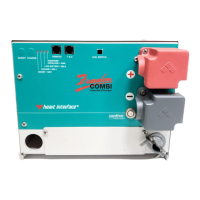7
BATTERIES
Selecting Batteries
When you choose your batteries, look for true, deep cycle
batteries that are rated in amp-hours (AH) and sized to match
your power requirements. Use the “Typical Power Consump-
tion” chart on page 10 to help you calculate how many batter-
ies you need to purchase. Check with your battery manufac-
turer for the specifications.
Deep-cycle batteries fall into three broad categories: wet cell,
gel cell and advanced AGM (Absorbed Glass Mat) batteries.
Wet Cell Batteries
True deep-cycle wet cell batteries have relatively thick internal
plates that are alloyed with antimony. Look for the following
types:
• 12-volt marine/RV deep-cycle batteries are acceptable.
• 6-volt golf cart batteries perform well and may have a
longer life. These batteries must be used in series and
connected in pairs.
• High quality deep-cycle batteries offer good performance
and are available in a wide variety of sizes.
Types of Wet Cell Batteries to Avoid
• Do not use ordinary car batteries or engine starting
batteries. If the battery is rated only in Cold Cranking
Amps (CCA) and reserve capacity, it is designed to start an
engine.
• Most hybrid type, wet cell batteries will have limited life
if deeply discharged. These batteries are described as
suitable for either engine starting or deep-cycle applica-
tions.
• Do not use maintenance-free, wet cell batteries. They will
not hold up well to deep discharging and repeated cycling.
Wet Cell Battery Maintenance
• Frequently check the electrolyte level in wet cell batter-
ies. These batteries will give off gas as a natural result of
charging; therefore they will lose water. When necessary,

